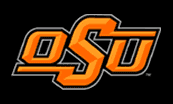
|
Oklahoma State University Stillwater, OK |
|
Oklahoma Alfalfa |
|

|
Oklahoma State University Stillwater, OK |
|
Oklahoma Alfalfa |
|
|
DAMAGED HAY - WHAT IS ITS VALUE? Each alfalfa hay producer would choose to produce a top quality commodity and receive a premium for that product. Too often, Mother Nature disrupts those plans with rain, heavy dew and prolonged delays before baling and after hay is cut. What is the value of this stripped, bleached, discolored product? It is probably much better than the producer estimates. Even though it cannot be expected to bring a premium price, the value of discolored hay may be better than we used to think. This is where an accurate protein analysis can offer increased value to an otherwise lower valued roughage. Demands for good quality alfalfa hay are increasing with stocker and cow-calf producers. They recognize the value of high quality protein, a good energy supply, high levels of readily digestible minerals and vitamins that are furnished all in one package - alfalfa hay. The beef producers traditionally have not been willing to pay the premiums for dairy or horse quality hay. But as protein and energy supplementation costs remain high and Oklahoma weather problems threaten to even increase these costs, alfalfa hay becomes a more attractive consideration. Damaged hay should not be expected to receive top dollar, but with improved appreciation by both hay producer and stocker and/or cow-calf folks, this can be a commodity that will meet livestock requirements and be competitively priced by hay producers, benefiting both parties. When selling (or buying) discolored hay, remember that
color is a general indication of forage quality, not a substitute for a good chemical
analysis. Your County Extension Agricultural Agent can put you in touch with the O.S.U.
lab or other labs around the state. Hay Judging. OSU Extension Facts F-2588 Collecting Forage Samples for Analysis. OSU Extension Facts F-2589 Minimizing Losses in Hay Storage and Feeding
|
|
| Fred Smith, Former Area Extension Livestock Specialist
|

|